When Conterno purchased the monopole Cascina Francia in 1974 it was a wheat field, although vines had been planted there in the past. Given all of the change in Piedmont over the last thirty-plus years, it is hard to believe that Conterno didn’t acquire another parcel after that until Cerretta in 2008, and, now Arione immediately to the south of Francia in 2015. All are in Serralunga.
Since then the estate, under Roberto’s meticulous care, has gone from strength to strength!
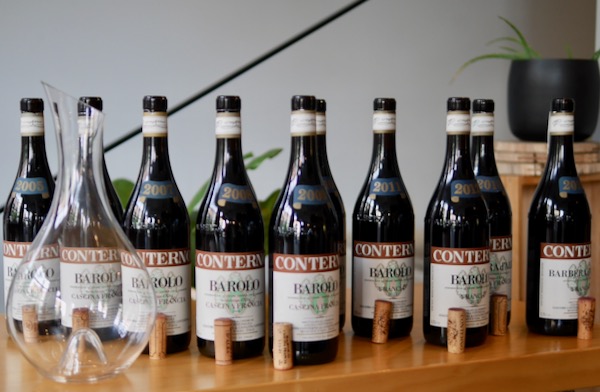
About Conterno Giacomo
Cantine Giacomo Conterno is one of the greatest names in all of Piemonte. The estate was formed in 1908 when Giacomo’s father, Giovanni Conterno started a wine bar in the village of San Giuseppe. Giovanni made Barolo from purchased grapes and sold whatever was not needed at the tavern in barrel at this time, as was the custom throughout the region in the early twentieth century. Their flagship Riserva Barolo, Monfortino, was first conceived as a means of showing off the quality of their best wine, and was first bottled on its own in either 1912 or 1920. There are reports that a 1912 Monfortino was made by Giovanni, but the family members cannot recall if this was indeed the case. In any event, after his return from World War I, Giacomo Conterno and his father Giovanni certainly made a 1920 Monfortino, and a legend was started.
Giovanni Conterno passed away in 1934 and his son Giacomo took over running both the tavern and the winery. Giacomo had two sons, another Giovanni and Aldo, who were given the reigns of the family business in 1961. Giovanni (grandson of the estate’s founder) had vinified the 1958s with his father, and was responsible for the estate’s wines from 1959 onwards. Younger brother, Aldo Conterno was interested in experimenting with a more modern style of Barolo, and the estate was split between the two brothers in 1969. Giovanni continued on making wines as his father and grandfather had done before them, making great, traditional Barolo of uncompromising quality. Today, the torch has been passed to fourth generation winemaker, Roberto Conterno. Roberto worked side by side with his father for many years before his passing in 2003. Roberto himself is one of the most fastidious and perfectionist winemakers we have experienced, and many feel he has taken the winery to even greater heights than his predecessors.
The Conterno style of Barolo has always been ultra-traditional, with a long maceration followed by extended aging in large, old oak casks (botti). In the old days, aging was anywhere from four to ten years prior to bottling, and often longer, sometimes with multiple bottlings from the same vintage. For the Monfortino, it used to be held in a single 4,000-5,000 liter botti for a minimum of ten years prior to its bottling (the 1970 Monfortino was not bottled until 1985!). Today, the “regular” Barolos are aged for four years before bottling, and the Monfortino for seven years – the only “modernist” concession in the entire vinification and aging process!
Like many top producers, in the old days, the Conternos made their Barolo exclusively from purchased grapes. The Conterno family sourced from some of the best growers mostly in the commune of Serralunga d’Alba but also surrounding villages. The 1920 Monfortino, for example, was made from purchased grapes from the Le Coste vineyard in Monforte d’Alba. In 1974, the Conterno family purchased the 16 hectare vineyard of Cascina Francia, one of Serralunga D’Alba’s choicest parcels. The first vintage to be produced from this vineyard was legendary 1978…quite an auspicious beginning! Interestingly, while the 1978 “regular” Barolo was made from grapes in Cascina Francia, it was not until the 1980 vintage that the name of the vineyard appeared on the label of the regular bottling.
Today, the estate owns vineyards in three of the top Crus in the commune of Serralunga, having added Ceretta in 2008 and Arione in 2015. Roberto disclosed the price of the less than 6Ha Arione vineyards as 6million euro! There are now three single-vineyard Barolo bottlings at Conterno, plus the Monfortino Riserva, which is only released in the best vintages. At present, both the Monfortino and the Francia bottling come from the Cascina Francia vineyard. Future vintages of Monfortino have wines from at least Arione potentially headed for the blend. The grapes for these two wines are earmarked while they are still on the vine, with the vintage’s very best grapes selected to become Monfortino. Fermentation of both bottlings is identical with the exception that the Monfortino witnesses no temperature control and receives a slightly longer maceration. In fact, two separate cuvees are made each year until a determination is made – usually several years after the harvest – whether to release the Monfortino on its own, or to combine it with the Cascina Francia to make one wine. The Monfortino selection is only made if it is determined to be significantly different, both qualitatively and stylistically, from the rest of the Cascina Francia.
In addition to the outstanding Baroli made by Giacomo Conterno, there is also Barbera d’Alba produced from both Cascina Francia and Ceretta. The Barbera are aged two years in large botti and are some of the most age-worthy and brilliant examples of this underrated grape to be found in Piemonte. Note: beginning with the 2010 Barolo and 2012 Barbera from Cascina Francia, the wines will labeled as simply “Francia” in order to to comply to the new standardization of Barolo cru’ names across the region.
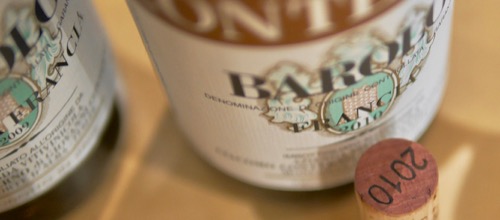
While there is a fifth generation of Conternos now potentially waiting in the wings, the legacy of this winery goes beyond the century of truly benchmark Baroli produced. Certainly, the Conterno family belong in the same visionary breath as Bruno Giacosa and Angelo Gaja in helping to create a market for fine Piedmontese wines that can compete among the world’s finest and most prestigious examples. But Roberto himself has quietly and steadfastly pushed the limits of quality by focusing on perfecting minute details in the viticulture and winemaking process. First, the winery has experimental vineyards where various massale selection varietals, both new and old, are tested and evaluated for future use. In addition, the winery itself is a meticulous “laboratory” for creating the finest wines possible. No expense has been spared in equipment to be used for qualitative improvement. His de-stemmer, for example, is a one-of-a-kind machine that he helped to to create, and operates with a level of precision more like a japanese sushi chef than other standard winemaking machines!
In the Vineyard
Robert is as meticulous with his vineyard as his winery. Every second of footage I’ve seen shows incredible attention to detail. His canopies run very high, I wonder the impact of this. In part, the vigour of Nebbiolo needs to be considered. Lot’s of thoughts, no confirmations from Roberto on this. Possible that:
- High canopies/longer shoots give more leaves, allowing the fruit zone to be plucked of leaves increasing air flow and reducing disease risk.
- High canopies could shade the fruiting zone on the row behind keeping it cooler and reducing the chance of raisining/shrivel. We know Cascina Francia faces west stopping the afternoon sun beating the fruit up would be worth while. It is also very steep at 27° slope, you’d need the height to generate the shade. A video I saw with Antonio Galloni demonstrated this shading working.
- Greater leaf area may per vine may advance rippening, if this is countered by leaf plucking the fruiting zone the leaf area will be reduced and sugar vs phenological (flavour and tannin) ripening can be kept in alignment so the wine doesn’t end up with too much sugar and potential alcohol before the flavours and tannins are ripe.
Yield control is strict with fruit thinned to one bunch a shoot. Bunch size is on the smaller size for Nebbiolo too.
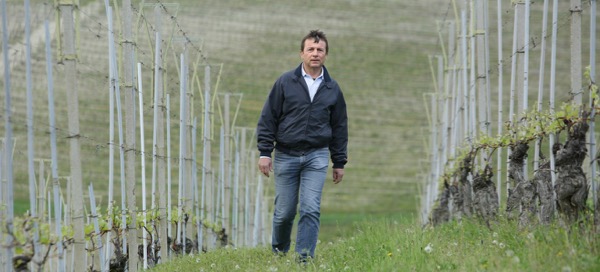
In the Winery
As with all of the great wines. It all happens in the vineyard.
The winery is about not F*#$ing it up. Things are simple with longer macerations, and, longish maturation, neutral large oak and patience. Time in oak seems to be reducing a little with warmer vintages to retain freshness. The proof at the end of the day is in the glass!
The wines of Conterno-Giacomo can be incredibly rich and generous, years like 2010 looking like a current release in 2018! There is always harmony, balance and energy to the wines. The Barbera is to mine in the top handful of wines made from the variety.
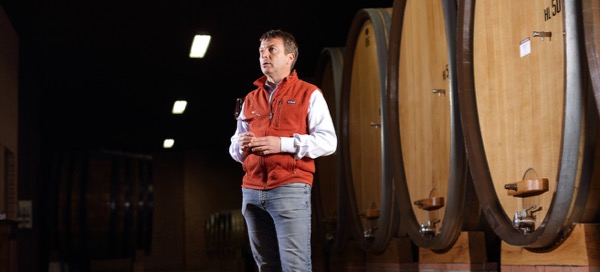
In the footage below Robert explores use of large oak for micro-oxygenation not to influence flavours or tannins. Taking his own path and the history of the winery.
We deep dive into Freshness & Development in ‘Wine Decoded Tasting Revolution: Bite 3 – Freshness & Development’
There’s a couple of links to Episodes of the Bathtub Winemaking Project were we talk about this and demonstrate it too!
In a nutshell, it’s about ensuring the wine is healthy during fermentation and that the tannins and flavours develop well during maturation while maintaining freshness, balance and energy in the wine.
The 2013 & 2015 Vintages
Roberto Conterno is the ultimate example of why you play the wine not the vintage. Just watch as in year that everyone has called a disaster as he makes yet another ‘Monfortino’ Riserva – Think 2002 and 2014!
Where in the World is Conterno Giacomo
Roberto’s vineyards are all in Serralunga d’Alba, his most famous the Francia vineyard, long responsible for both the Barolo ‘Cascina Francia’ and ‘Monfortino’ Riserva lies at the very southern end of Serralunga, the South-East corner of Barolo. Next to it is the Arione Cru of which Roberto acquired a portion in 2015. His other main holding is north of the township of Serralunga, Cerretta (purchased in 2008), which lies above Prapo and next to Baudana. Where Cascina Francia and Arione have more limestone, Cerretta has more clay, elevation, orientation, and, aspect are similar between the two. Soil type becomes a defining factor in the wine.
The Cascina Francia vineyard run at a slope of 27° from the top as you look down are the Nebbiolo vines. As the vineyard begins to flatten it transitions to Barbera.
Serralunga is known for making structured wines of longevity.
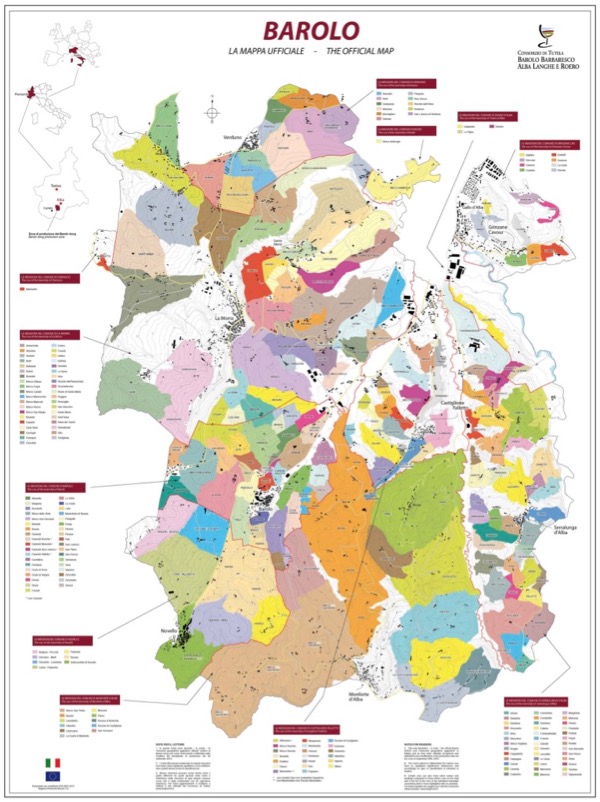
About the Wines
Conterno-Giacomo Barolo 'Arione' 2015
Here in its debut vintage at Conterno, the 2015 Barolo Arione is wonderfully aromatic and nuanced. Sage, mint, pine, licorice and wild cherry all grace this vivid, exquisite Barolo with stunning layers of complexity. In the glass, the 2015 is ample and evocative, with all of the mystery of Nebbiolo that unfolds over time. Firm Serralunga tannins need time to soften, likely tons of time, but the beauty of the Arione is impossible to miss. The 2015 finishes with tremendous weight, substance and resonance, all of which will make it a fascinating wine to follow over the next several decades.
Conterno-Giacomo Barolo 'Cerretta' 2015
Conterno's 2015 Barolo Cerretta is sensual and inviting, until the firm Nebbiolo tannins kick in. Bright floral and orange zest notes perk up a core of sweet red cherry fruit. Medium in body and beautifully persistent, the Cerretta is positively stellar. Just as it was from barrel, the 2015 is so refined, so alluringly young, that it really does not seem like a Serralunga Barolo at all.
Conterno-Giacomo Barolo 'Francia' 2015
The 2015 Barolo Francia is a soaring, regal wine endowed with tremendous intensity in all of its dimensions. The most reticent and inward of the 2015s, the Francia possesses superb textural density and persistence all the way through to the explosive finish. An immense, towering Barolo, the Francia is positively stellar. It is also going to require a number of years to be at its best. In recent years, the Conterno Barolo Francia has often been relatively accessible post bottling, the 2015 is far from that.
Conterno-Giacomo Barolo 'Monfortino' Riserva 2013
The 2013 Barolo Riserva Monfortino is brilliant, precise, focused and nuanced, with the classic sense of austerity it has always shown from barrel. In the 2013, readers will find a biting, vibrant Monfortino built along super-classic lines that includes vintages like 1996 and 1999, but the 2013 has more finesse that is the result of a the slight refinements and evolution that have taken place here over the last decade. In 2013, Roberto Conterno bottled the entirety of his Barolo production from Francia as Monfortino.
Warm aromas of plums, rose petals and spices with hints of sandalwood. Some tar. Full body, dense center palate with glorious fruit and a fantastic finish. Very, very polished and fine tannins. Vertical and deep. A great Monfortino. Try in 2023.
The Barolo Francia was not produced in 2013 because Roberto Conterno diverted all fruit from that vineyard to this wine. Monfortino was not produced in 2011 or 2012, meaning that this 2013 edition follows directly after the absolutely stunning 2010 vintage (which earned a perfect 100-point score). The two vintages (2010 and 2013) are very similar, strikingly so, but the 2013 vintage registers at a slightly lower structural threshold. The tannins are slightly looser, or softer in the case of this wine. With up to six years in botte, the 2010 vintage is still crunchy and super sharp, while this wine is slightly more succulent and earthy. Some 20,000 bottles, 2,500 magnums and 400 three-liter bottles were made.
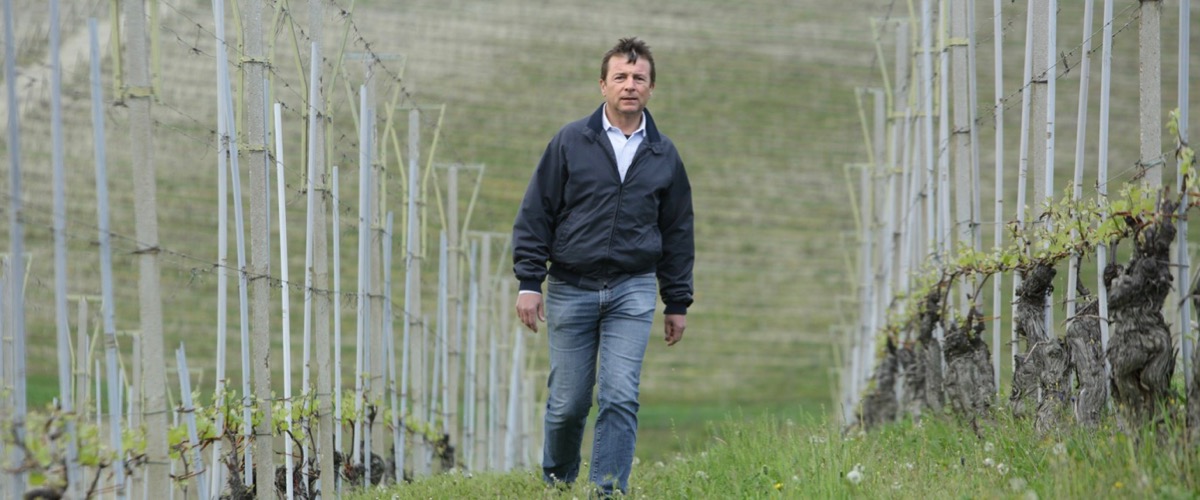
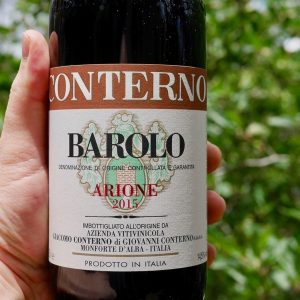
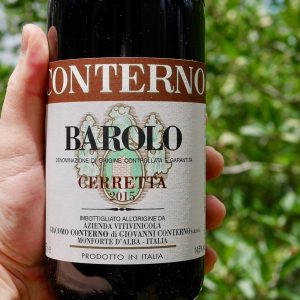
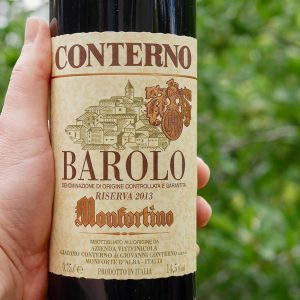
You must be logged in to post a comment.